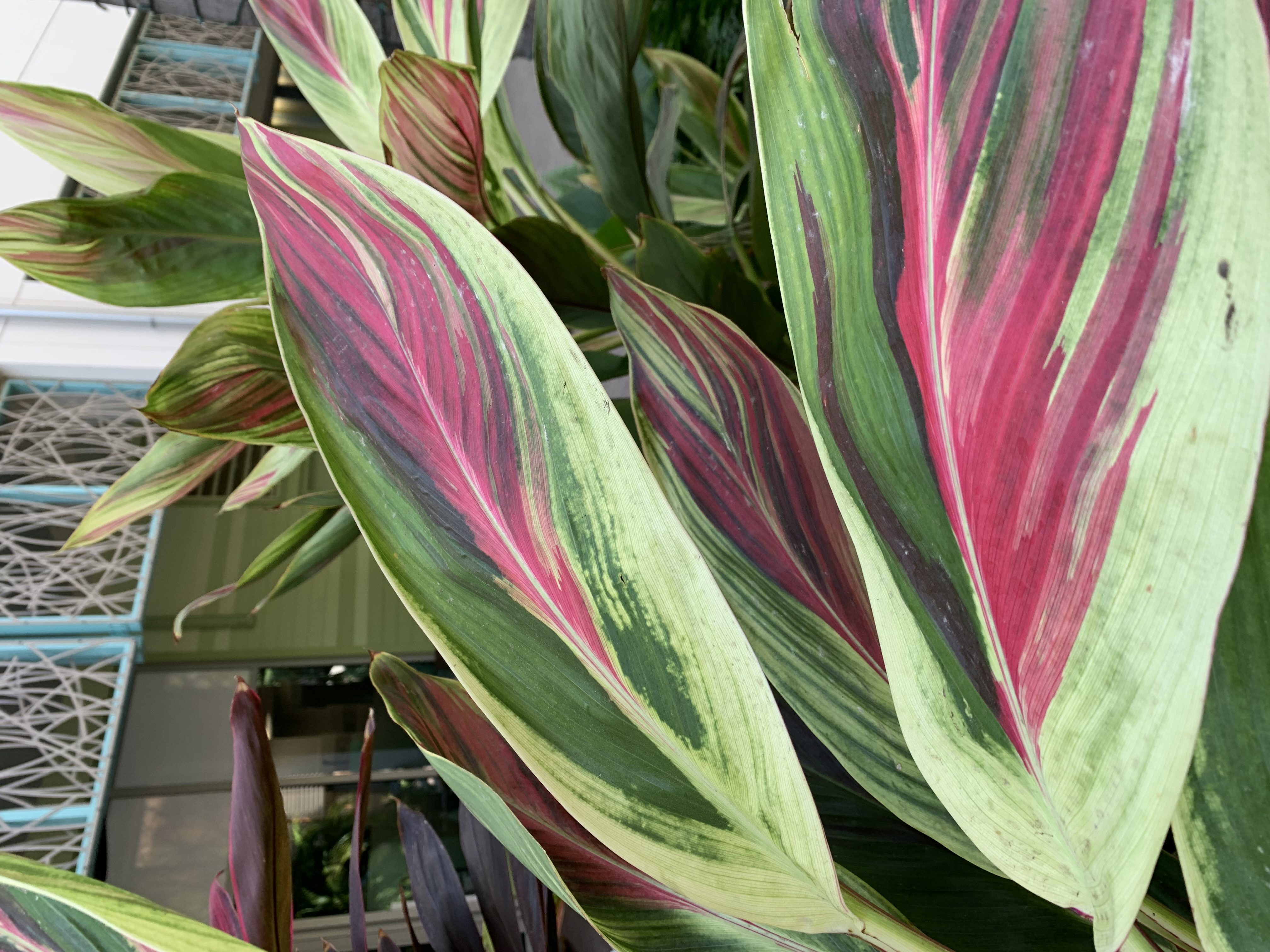
Following a wonderful March full of celebrations for Women’s History Month at Camana Bay, one thing women are likely to continue celebrating with is the traditional afternoon tea. Whether sharing in a literal cup of tea, or a musing while clearing airways, there is another type of Ti that has long held symbolic importance in the horticultural and agricultural world.
Ti plant, a member of the genus Cordyline, currently has approximately 15 known species with an extensive range of nativity – spanning Southeast Asia, the South Pacific, and into Oceania. The genus has an enormous amount of cultural significance in these regions and was considered sacred to most, prior to the introduction of modern-day religions. Cordyline fruticosa cv. Kiwi, more specifically, is native to the South Pacific, where its conventional use is an ornamental.
The striking sword-shaped leaves appear almost illuminated with their bright stripes of lime green, yellow and hot pink; ultra-glossy and shimmering in the dappled sunrays of Heliconia Court, Camana Bay. As is true with descriptive Botanical Latin, the specific epithet of fruticosa refers to its growth habit as a shrub.
This dazzling evergreen tropical shrub can be grown as a single woody stem to start, and as it matures can be trained/pruned into a lush, bushy shrub. Potentially reaching heights of 10 feet or more, with a spread roughly two-thirds the height depending on pruning techniques.
Performing best in semi-nutrient-rich, well-draining soils, Ti plant will also appreciate bright indirect sunlight to get the most vibrant leaf colour and promote flowering. The flowers grow up to 12-inch panicles, have a delicate fragrance and a lovely white to pale lavender appearance. In the right conditions, Ti plant will flower year-round.
Watering can prove slightly tricky with this plant, and it may take a few trial-and-error runs to get it right depending on conditions. A good rule of thumb is to watch closely and if the leaf margins are browning, it is underwatered; if the leaves are mushy and dropping, it is overwatered. Keep an eye out for mealybug, scale and spider mite, which are all attracted to Ti plant — especially if under water stress.
Just a few of the colossal list of uses for the genera Cordyline include clothing, footwear, rain gear, hula skirts, leis, ceremonial activities, roof thatching, fishing lures, wrapping gifts or foods, medicinal/herbal medical uses and distilling alcohol through fermentation processes. Though not traditionally used as food due to its sacred designation, it has been recorded to be eaten by humans during times of famine. As with any plant containing these properties, it is strongly recommended to perform extensive research prior to ingesting and should be noted that this plant is known to be toxic to pets, sometimes children, and therefore is best to keep out of their curious reach.
This article was originally featured in the April 2023 print edition of Camana Bay Times.